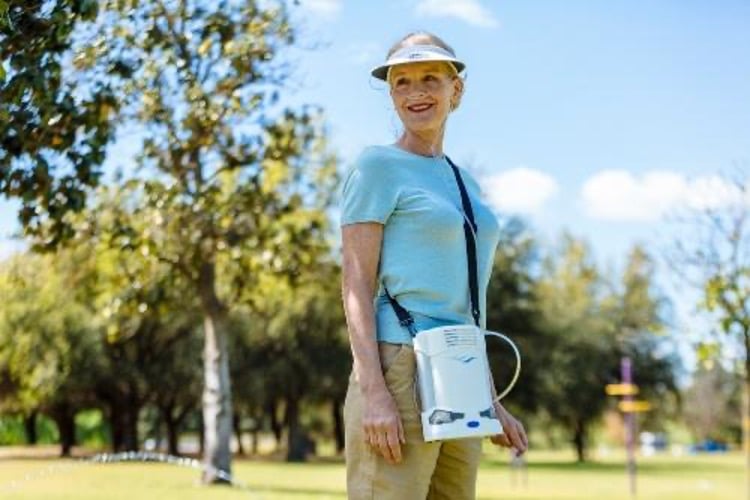Choosing the Right Portable Oxygen Concentrator: A Comprehensive Guide
Living with respiratory illness can be difficult, but advances in medical technology are allowing people to live productive lives while controlling their oxygen needs. Portable oxygen concentrators (POCs) have emerged as game changers, bringing convenience, mobility and freedom to those who need supplemental oxygen. However, with so many alternatives accessible, it’s important to choose the POC that best suits your individual needs. This detailed article reviews the factors when making a selection mini portable oxygen concentrator.

Understanding Portable Oxygen Concentrators
Before we start, it’s necessary to understand what a portable oxygen concentrator is and how it works. A portable oxygen concentrator is a medical device that absorbs oxygen from the surrounding air while filtering out other gases to provide concentrated oxygen to the user. Portable Oxygen Concentrators (POCs) are self-powered by batteries or electricity to provide a continuous supply of oxygen, unlike oxygen tanks that need to be recharged or replaced.
Oxygen demand assessment
It is essential to evaluate your oxygen needs to select the portable oxygen concentrator (POC) that best suits your unique needs. Things to consider include:
Talk to your health care provider
Start by consulting a doctor, preferably a pulmonologist or respiratory therapist. They assess your breathing, perform tests, and establish your oxygen demand. These requirements are usually calculated in liters per minute (LPM) and may vary depending on lung function, activity level and medical condition.
oxygen saturation
The percentage of oxygen in the blood is expressed as oxygen saturation, usually measured with a pulse oximeter. To calculate optimal oxygen flow, healthcare professionals check oxygen saturation levels at rest, during exercise, and during sleep. Saturation levels of 88-92% or higher are appropriate.
continuous vs. pulse dose oxygen
It is important to understand the prescribed oxygen delivery strategy. Continuous flow delivers a constant flow, ensuring an endless supply of oxygen. This setup is often applied to people who require high oxygen flow during sleep. Pulse-administered oxygen, on the other hand, manages bursts timed with inhalation. This mode conserves oxygen and is generally suitable for people with low oxygen needs or high activity.
lifestyle and activity level
Consider your lifestyle and daily activities when determining your oxygen needs. Suppose you lead an active life or engage in physical activity. In this case, a POC with a better oxygen flow rate or pulse capacity may be needed to meet the oxygen demand during exercise. Talk to your doctor about your activity level and oxygen needs so you can get a POC that fits your lifestyle.
Oxygen conservation function
Some POC versions offer advanced oxygen saving features such as an adaptive algorithm that changes oxygen supply based on the respiratory rate. These properties optimize oxygen utilization, extend battery life, and reduce the frequency of refills or replacements. If you have specific oxygen conservation requirements, please consult with your physician to select a POC that meets your needs.
Long Term Oxygen Therapy (LTOT)
If you require long-term oxygen therapy (LTOT), where you often use oxygen for more than 15 hours a day, you may need a POC with a larger battery or connect to an external power source. Consider your POC’s battery life and power options to help meet your LTOT requirements.
Remember, your healthcare provider is responsible for determining your oxygen and has the expertise to identify the optimal oxygen flow rate and delivery technology based on your medical condition and lifestyle. Understanding your oxygen demand can help you make an informed choice when choosing a POC that provides essential oxygen therapy for your daily activities while improving your quality of life.
portability and weight
The portability of POCs is one of their major advantages. It is essential to consider the weight and size of an item when purchasing. Find a portable office that is light enough to carry around. Consider your lifestyle, whether you travel regularly or need a small gadget for everyday use. Some POCs are certified for air travel, making them ideal for maintaining mobility during flights.
Battery life and power options
Battery life is important, especially if you are on the go or need easy access to a charging outlet. Examine the POC’s battery life and the availability of additional batteries or power sources. Long battery life means you can use it longer without having to recharge or replace batteries regularly. Some technologies allow the use of both batteries and direct AC/DC power to ensure a continuous supply of oxygen.
Oxygen delivery method
Different POC machines offer different oxygen management mechanisms. Continuous flow provides a continuous supply of oxygen, whereas pulse dosing dispenses oxygen only when the user inhales. Consider a given oxygen management strategy and choose a POC that supports it. Some POCs offer both delivery modes, giving you the flexibility to meet your changing needs.
noise level
Noise levels in POCs can affect comfort and convenience. Look for devices that are quiet enough that you can use them in public places or even while sleeping. Quieter devices provide a better user experience and are less disturbing to those around you.
maintenance and durability
Review the maintenance requirements and durability of the POC you are considering purchasing. Choose equipment that is easy to clean and maintain. Look for long-lasting construction that can withstand everyday use and unexpected mishaps. Reviewing your warranty and customer support options is important to address new issues.
Additional features and accessories
Consider the additional features and accessories offered by the various POC models. Some units have simple user interfaces, built-in warnings for low oxygen levels or battery life, and LCD panels for convenient monitoring. Accessories that enhance convenience and portability include car chargers, travel cases and extra tubes.
conclusion
Choosing the best portable oxygen concentrator is an important decision that can significantly affect your quality of life. You can make an informed decision by reviewing oxygen requirements, portability, battery life, oxygen delivery mode, noise level, maintenance and other features. Talk to your doctor and evaluate several models to find the POC that fits your needs while allowing for the flexibility and mobility you want. With the right POC, you can maintain an active and rewarding lifestyle while efficiently managing your oxygen therapy.




